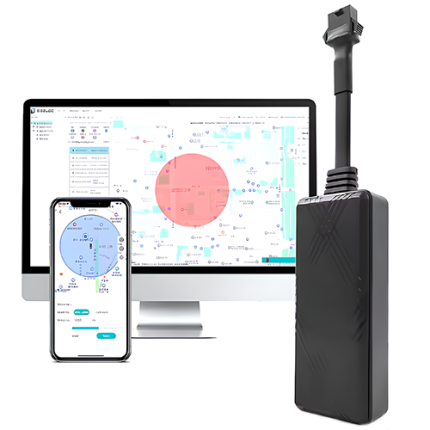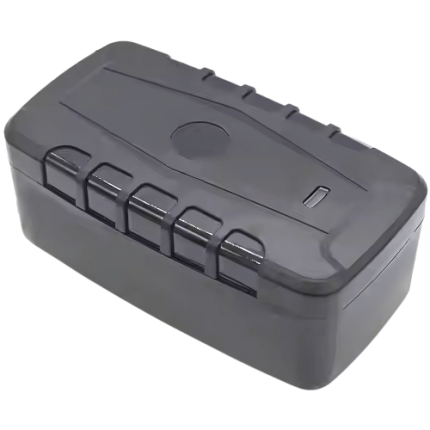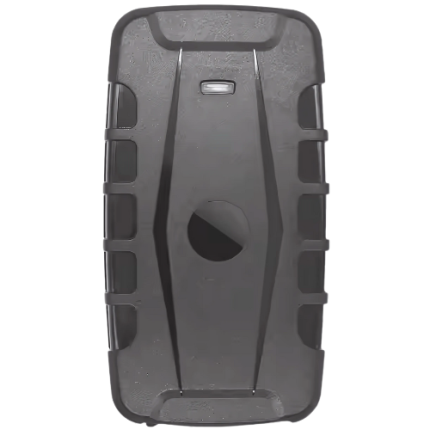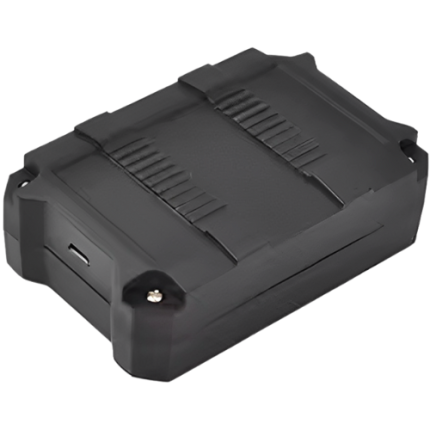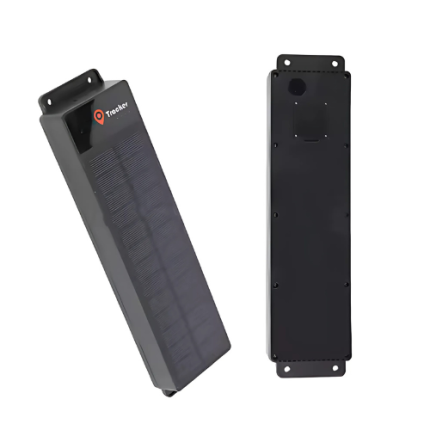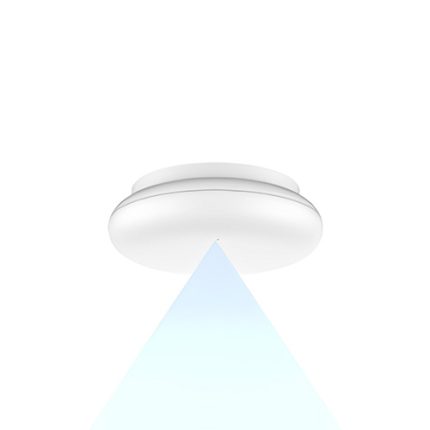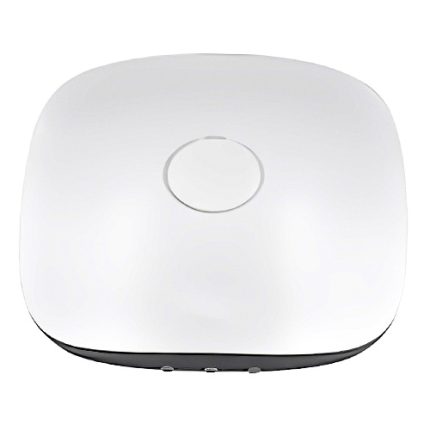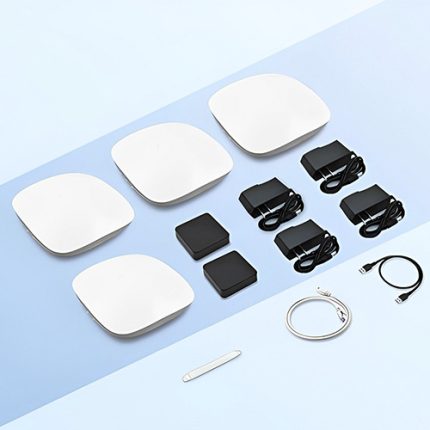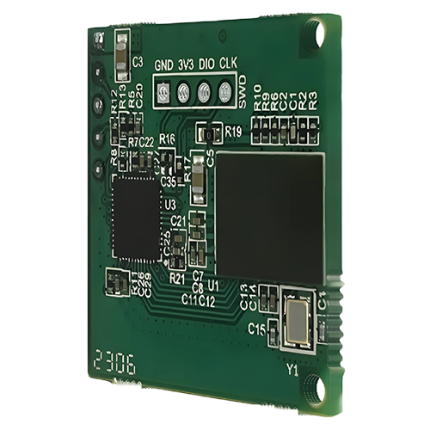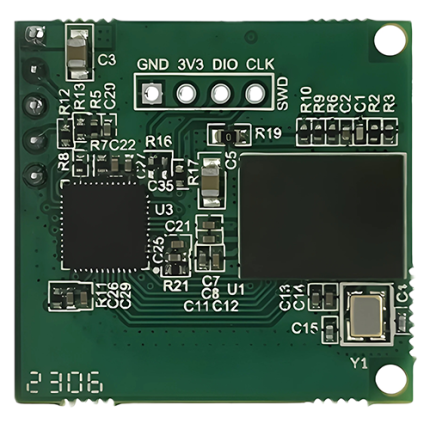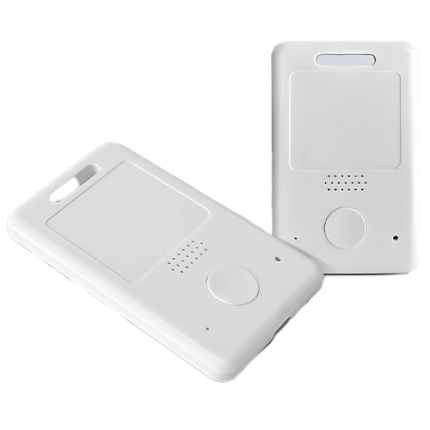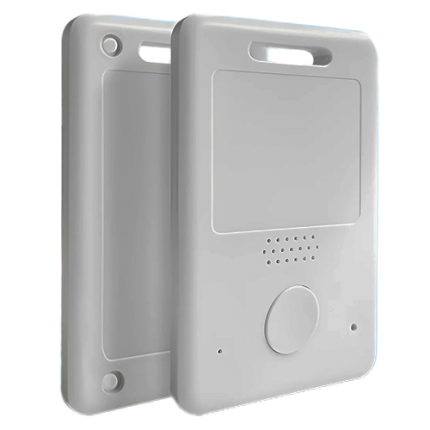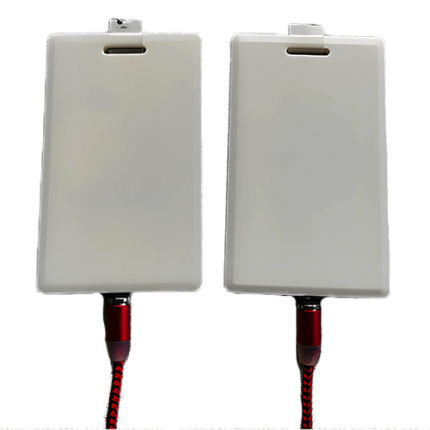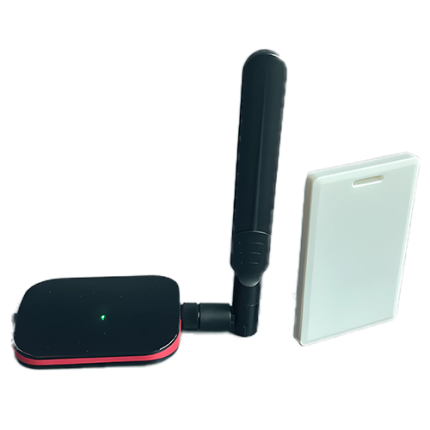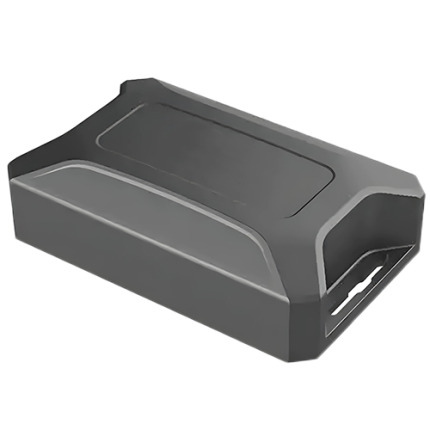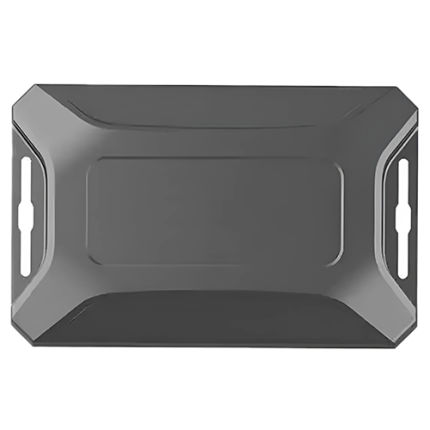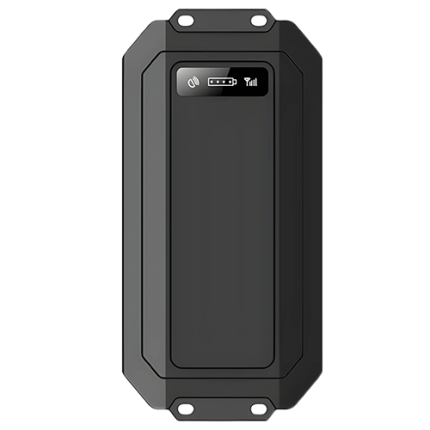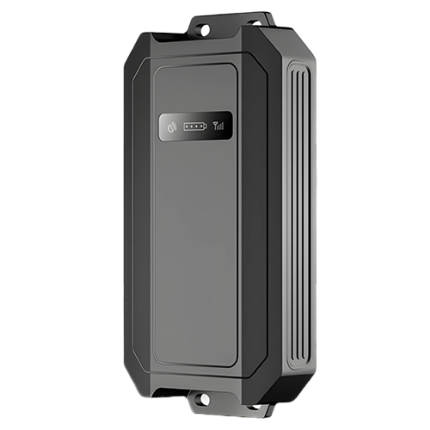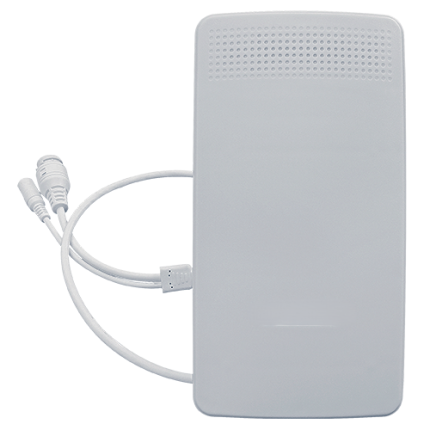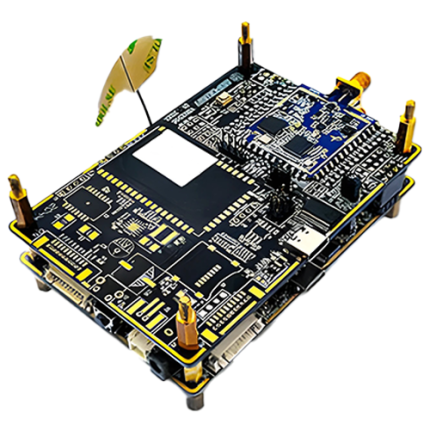Overview
Minneapolis–St. Paul–Bloomington, MN-WI MSA and its surrounding areas represent one of the most dynamic and diverse metropolitan regions in the United States. Known for its strong economic foundation, the area is home to a variety of industries, including manufacturing, healthcare, technology, transportation, and education. As a leading economic hub, the region attracts businesses from all over the world, with cutting-edge research, a highly skilled workforce, and an entrepreneurial spirit driving innovation and growth. The region is a center for innovation in areas like industrial IoT, transportation, and smart technologies, which are reshaping both the local and global landscape.
With a growing number of industries relying on sophisticated technologies, Minneapolis–St. Paul–Bloomington, MN-WI MSA plays a crucial role in the development and implementation of smart systems and solutions. From automating manufacturing processes to improving logistics and transportation efficiency, the need for advanced technologies like IoT, RFID, and GPS solutions is growing rapidly. Organizations across the region are integrating these technologies into their operations, enhancing productivity, reducing costs, and improving the customer experience.
GAO Tek, a recognized leader in the development and provision of advanced technology solutions, plays an essential role in this transformation. Our state-of-the-art technologies, including industrial IoT systems, RFID solutions, and GPS IoT devices, are helping industries in Minneapolis–St. Paul–Bloomington, MN-WI MSA streamline operations, monitor assets in real time, and optimize processes across various sectors. Whether it’s enhancing fleet management, improving warehouse operations, or enabling smart city infrastructure, GAO Tek is at the forefront of driving innovation in the region.
Navigation Menu for IoT
- LoRaWAN
- Zigbee
- Wi-Fi HaLow
- Z-Wave
- BLE & RFID
- NB-IOT
- Cellular IoT
- GPS IoT
- IoT Sensors
- Edge Computing
- IoT Systems
- Biometrics
Our products are in stock can be shipped to anywhere in continental U.S. or Canada from our local warehouse. To purchase or for any further information, please fill out this form or email us.
We are actively looking for partners who are like us located in the U.S. and Canada. For more information on partnering with GAO, please visit Partner with GAO Tek Inc. It lists various ways to partner with GAO, such as OEM Partnerships, Technology Integration, Distribution and Reselling Opportunities, Presenting at the Leading Event TekSummit, Joint R&D Projects, Training and Consulting Services, Industry-Specific Collaborations, Research and Academic Partnerships.
Minneapolis–St. Paul–Bloomington, MN-WI MSA and Its Surrounding Areas
Minneapolis–St. Paul–Bloomington, MN-WI MSA and its surrounding areas form one of the most dynamic and diverse metropolitan regions in the United States. This metropolitan area, often referred to as the “Twin Cities,” is a major cultural, economic, and industrial hub in the Upper Midwest. The region is made up of the core cities of Minneapolis and St. Paul, along with Bloomington, which is home to the famous Mall of America, as well as a network of surrounding suburbs, neighborhoods, and districts that contribute to its vibrant and growing population.
Municipal and District Names
The Minneapolis–St. Paul–Bloomington, MN-WI MSA includes multiple municipalities, districts, and neighborhoods that give the region its unique identity. The City of Minneapolis, the largest city in the metro area, is known for its skyline, numerous lakes, and parks. It is also home to cultural landmarks such as the Walker Art Center and the Guthrie Theater. St. Paul, the state capital, is rich in history and is the second-largest city in the region. St. Paul is often celebrated for its historical architecture, including the Minnesota State Capitol and the Cathedral of Saint Paul.
Bloomington, the third-largest city in the metro area, is best known for the Mall of America, one of the largest shopping centers in the United States. It also offers scenic views of the Minnesota River and is home to numerous parks and recreation areas.
In addition to these core cities, the surrounding suburban areas, including Eden Prairie, Minnetonka, Edina, Maple Grove, and Woodbury, contribute to the region’s diversity and growth. These suburbs provide a wide range of residential, commercial, and industrial spaces, and they are also home to numerous tech companies, healthcare providers, and research institutions.
Climate and Geography
The climate of the Minneapolis–St. Paul–Bloomington, MN-WI MSA is classified as continental, with cold winters and warm summers. Winters can be harsh, with temperatures regularly dipping below freezing and snowfall accumulating heavily. However, the region also enjoys warm summers, with temperatures often rising above 80°F. The climate offers a diverse range of seasonal activities, from winter sports like skiing and ice skating to summer activities such as boating and hiking.
Geographically, the metro area lies along the Mississippi River, which has played a critical role in its development. The river serves as a key transportation route and provides picturesque views throughout the region. The area is also known for its numerous parks, lakes, and green spaces, making it one of the most environmentally conscious metropolitan regions in the country.
History and Culture
Minneapolis–St. Paul–Bloomington, MN-WI MSA has a rich and diverse history that dates back to the early days of European settlement in the region. The area was initially inhabited by Native American tribes, including the Dakota and Ojibwe people. European settlers arrived in the 19th century, and the region became a key hub for the lumber and milling industries, particularly due to its location on the Mississippi River.
As the region industrialized, it became a key player in the growth of the Midwest, with industries such as manufacturing, transportation, and healthcare driving its economy. Over time, Minneapolis–St. Paul–Bloomington, MN-WI MSA transformed into a center of commerce, culture, and education, with institutions such as the University of Minnesota and the Mayo Clinic cementing its role as a hub for innovation.
The Twin Cities are known for their vibrant cultural scene, with a diverse array of arts, music, theater, and dining options. Minneapolis, for instance, is renowned for its music scene, having produced legendary musicians like Prince. St. Paul is home to the annual Winter Carnival, one of the oldest and largest winter festivals in the United States.
Significance in the State and the Country
The Minneapolis–St. Paul–Bloomington, MN-WI MSA plays a crucial role in the state of Minnesota and the larger U.S. economy. As the state’s largest metropolitan area, it is home to key industries such as healthcare, education, technology, manufacturing, and finance. The region has seen significant growth in sectors like medical technology, clean energy, and high-tech manufacturing, making it an economic powerhouse in the Midwest.
The metro area is also home to several Fortune 500 companies, including major players in industries like retail, finance, and food processing. The region’s central location, highly educated workforce, and strong transportation infrastructure make it a hub for businesses and industries across the country.
Moreover, the region plays a significant role in shaping national policies, especially in areas such as healthcare and education. With leading institutions like the Mayo Clinic and the University of Minnesota, Minneapolis–St. Paul–Bloomington, MN-WI MSA has been a key driver of medical and scientific research, contributing to advances in healthcare and technology that impact the entire nation.
Education and Innovation
Education is one of the cornerstones of the Minneapolis–St. Paul–Bloomington, MN-WI MSA. The region is home to a wealth of public and private educational institutions, including the University of Minnesota, one of the largest and most prestigious public universities in the U.S. The University of Minnesota is a key player in driving innovation and research, particularly in the fields of technology, medicine, and engineering. Other institutions like Macalester College, St. Thomas University, and Hamline University further enhance the region’s academic reputation.
Minneapolis–St. Paul–Bloomington, MN-WI MSA also fosters a culture of innovation, with numerous technology companies and startups calling the region home. This innovative spirit has made the area a leader in the development of advanced technologies, particularly in the areas of IoT, smart manufacturing, and healthcare technology. Companies like GAO Tek Inc. and its sister companies, GAO RFID Inc. and GAO Research Inc., have been serving the Minneapolis–St. Paul–Bloomington, MN-WI MSA for over four decades, providing state-of-the-art B2B and B2G technology solutions to industries across the region.
Landmarks and Notable Areas
The Minneapolis–St. Paul–Bloomington, MN-WI MSA boasts numerous landmarks and attractions that draw visitors from around the world. The Walker Art Center and the Minneapolis Sculpture Garden are world-renowned cultural institutions that highlight the region’s commitment to the arts. The Mall of America in Bloomington is another iconic landmark, offering not only shopping but also entertainment options like an indoor amusement park.
In St. Paul, the Minnesota State Capitol and the Cathedral of Saint Paul are key historical landmarks that reflect the city’s rich history. Other notable attractions include the Minnesota Zoo, the Science Museum of Minnesota, and the Mississippi National River and Recreation Area, which offers scenic views and recreational activities.
GAO Tek Inc. Offers Advanced IoT Solutions for Efficient and Intelligent Systems
GAO Tek Inc. offers a wide range of advanced technologies and products, including IoT, M2M, BLE, RFID, LoRaWAN, Zigbee, Wi-Fi HaLow, Z-Wave, NB-IoT, Cellular IoT, GPS IoT, IoT Sensors, and Biometrics. These solutions are designed to meet the growing demand for connected, efficient, and intelligent systems across various industries.
IoT (Internet of Things)
IoT (Internet of Things) Refers to the network of physical devices embedded with sensors, software, and other technologies to exchange data with other devices and systems over the internet. Our IoT solutions enhance automation, efficiency, and data-driven decision-making in sectors such as manufacturing, healthcare, and logistics.
M2M (Machine to Machine)
M2M (Machine to Machine) is a communication between devices without human intervention. It enables automation, remote monitoring, and data collection. GAO Tek’s M2M solutions cater to industries like smart cities, supply chain management, and agricultural automation.
BLE (Bluetooth Low Energy)
BLE (Bluetooth Low Energy) is a wireless communication technology designed for low power consumption. It is ideal for applications such as wearables, health monitoring, and asset tracking. Our BLE solutions help businesses create energy-efficient devices that provide seamless communication.
RFID (Radio Frequency Identification)
RFID (Radio Frequency Identification) is a technology used for tracking and identifying objects using radio waves. It has applications in inventory management, access control, asset tracking, and logistics. Our RFID solutions enable businesses to optimize operations and improve asset visibility.
LoRaWAN (Long Range Wide Area Network)
LoRaWAN (Long Range Wide Area Network) is a low-power, wide-area network protocol that connects devices over long distances. LoRaWAN is well-suited for applications like smart agriculture, environmental monitoring, and smart cities. GAO Tek’s LoRaWAN solutions provide reliable and scalable connectivity for IoT devices.
Zigbee
Zigbee is a wireless communication standard used in home automation and industrial control systems. It enables low-power, short-range communication, ideal for applications such as smart home systems and industrial sensors.
Wi-Fi HaLow
Wi-Fi HaLow is a low-power, long-range version of Wi-Fi, designed for IoT devices. It provides better range and efficiency than traditional Wi-Fi, making it ideal for applications like smart cities and remote monitoring.
Z-Wave
Z-Wave is a wireless communication protocol commonly used in home automation, providing secure and reliable communication between devices like lights, thermostats, and door locks. Our Z-Wave solutions are optimized for smart home applications.
NB-IoT (Narrowband IoT)
NB-IoT (Narrowband IoT) is a cellular technology designed for IoT applications, providing low power, wide area coverage. It is used in applications such as smart metering, environmental monitoring, and asset tracking.
Cellular IoT
Cellular IoT uses cellular networks to connect IoT devices, ensuring reliable and secure data transfer. This technology is essential for applications requiring real-time data transmission, such as fleet management, healthcare, and remote monitoring.
GPS IoT
GPS IoT integrates GPS technology with IoT devices to provide real-time location tracking. It is widely used in logistics, vehicle tracking, and asset management. Our GPS IoT solutions provide accurate tracking for businesses in logistics and transportation.
IoT Sensors
IoT Sensors are devices that monitor and collect data on various environmental conditions, including temperature, humidity, and motion. Our IoT sensors are used in industries like agriculture, manufacturing, and smart cities to provide valuable insights for automation and decision-making.
Biometrics
Biometrics refers to the use of unique physical characteristics, such as fingerprints or facial recognition, for identification and security. GAO Tek’s biometric solutions are widely used for access control, authentication, and security in both enterprise and consumer applications.
Major industries in the Minneapolis–St. Paul–Bloomington, MN-WI (MSA)
- Healthcare and Medical Services
- Retail and E-commerce
- Education and Research
- Finance and Insurance
- Manufacturing
- Technology and Software Development
- Transportation and Logistics
- Agriculture and Food Processing
- Construction and Real Estate
- Energy and Utilities
- Entertainment and Media
- Biotechnology and Life Sciences
Healthcare and Medical Services Industry of Minneapolis–St. Paul–Bloomington, MN-WI MSA
The healthcare and medical services industry in Minneapolis–St. Paul–Bloomington, MN-WI MSA and its surrounding areas is a cornerstone of the region’s economy, providing cutting-edge medical care, pioneering research, and diverse job opportunities. This industry is vital for improving public health, advancing medical technologies, and supporting economic growth.
- Healthcare Providers and Facilities
The region boasts world-class hospitals, clinics, and specialized healthcare facilities. These institutions rely on advanced technologies, including IoT sensors and Healthcare IoT (IoMT) solutions, for remote patient monitoring and hospital management. GAO Tek Inc. supports this sector with IoT-enabled devices for real-time asset tracking, medical inventory management, and hospital equipment monitoring. Additionally, GAO’s RFID systems ensure precise tracking of critical medical supplies and optimize operational workflows. - Medical Device Manufacturing
The Minneapolis–St. Paul area is a hub for medical device innovation. Companies in this division focus on designing life-saving devices such as pacemakers, imaging systems, and surgical instruments. GAO Tek contributes by offering precision IoT technologies like NB-IoT and Zigbee sensors, essential for quality control and predictive maintenance in manufacturing facilities. Our barcode systems streamline supply chain processes, ensuring compliance with stringent healthcare regulations. - Biotechnology and Pharmaceuticals
Minneapolis–St. Paul has a thriving biotech sector, where research institutions and pharmaceutical companies collaborate to develop innovative treatments. GAO Tek provides Biometrics-enabled devices for secure laboratory access and GPS IoT solutions for temperature-sensitive pharmaceutical logistics. Additionally, our Wi-Fi HaLow systems enhance secure data transmission between research facilities, enabling seamless collaboration. - Health IT and Digital Healthcare
The demand for telemedicine and digital health solutions has surged, supported by advanced IT infrastructures in the region. GAO Tek offers robust BLE (Bluetooth Low Energy) devices for remote health monitoring, smart utilities IoT for energy-efficient healthcare buildings, and cellular IoT solutions that enable seamless connectivity in rural healthcare applications. - Public Health and Community Services
Public health organizations play a critical role in disease prevention and health education across the region. GAO Tek’s Environmental IoT systems support these initiatives through real-time monitoring of air and water quality, while our fleet management IoT solutions optimize logistics for vaccine and medical supply distribution.
Major Players in the Region
Minneapolis–St. Paul is home to major healthcare systems, global medical device manufacturers, and leading biotech firms. While these players drive the region’s growth, GAO Tek complements their efforts by providing advanced IoT, RFID, and M2M solutions tailored to healthcare and medical services. Our commitment to quality and innovation aligns with the rigorous standards of these organizations, ensuring reliable performance and long-term value.
Significance to Minneapolis–St. Paul–Bloomington, MN-WI MSA
The healthcare and medical services industry is integral to the economic and social fabric of Minneapolis–St. Paul–Bloomington, MN-WI MSA and its surrounding areas. It not only ensures access to world-class medical care for the population but also drives innovation through cutting-edge research and advanced manufacturing. The sector is a significant employer, offering jobs across a spectrum of fields, including clinical services, research, technology, and administration. Moreover, the industry fuels regional development by attracting investments and fostering collaborations between universities, Fortune 500 companies, and pioneering firms like GAO Tek Inc., which enhances the sector with transformative technologies such as Healthcare IoT, RFID systems, and precision IoT devices for medical applications. This synergy solidifies the region’s reputation as a global leader in healthcare and innovation.
GAO Case Studies
- Hospital Asset Management
A healthcare facility utilized GAO Tek’s RFID tracking systems and BLE devices to monitor high-value medical equipment, reducing loss and improving operational efficiency. - Temperature-Sensitive Logistics
A pharmaceutical company implemented GAO Tek’s GPS IoT solutions to ensure compliance with cold chain requirements during vaccine transportation, enhancing reliability and safety. - Remote Patient Monitoring
A rural health organization deployed GAO Tek’s cellular IoT devices for telehealth services, enabling real-time health tracking and consultation in remote areas. - Smart Hospital Energy Management
GAO Tek’s Smart Utilities IoT solutions helped a major hospital reduce energy consumption by automating HVAC and lighting systems, improving sustainability. - Medical Device Quality Assurance
A leading manufacturer adopted GAO Tek’s IoT sensors and predictive maintenance tools to enhance the precision and reliability of diagnostic equipment production.
Retail and E-commerce Industry of Minneapolis–St. Paul–Bloomington, MN-WI MSA
The retail and e-commerce industry in Minneapolis–St. Paul–Bloomington, MN-WI MSA and its surrounding areas is a dynamic sector that contributes significantly to the region’s economy. This industry spans traditional retail establishments, digital marketplaces, and a growing omnichannel presence, reflecting the evolving shopping preferences of consumers.
- Brick-and-Mortar Retail
The region is home to major shopping destinations, including malls and boutique stores, which serve diverse demographics. To enhance operational efficiency and customer experience, many retailers rely on RFID solutions from GAO Tek for inventory management and IoT sensors to monitor environmental conditions in physical stores. Our BLE devices enable seamless navigation in large retail spaces, improving accessibility for shoppers. - E-commerce and Digital Retail
E-commerce continues to dominate the retail landscape, with local and national businesses leveraging online platforms to reach customers. GAO Tek supports this sector by providing Zigbee and Wi-Fi HaLow technologies for secure and fast data transmission, enabling robust e-commerce operations. Additionally, our barcode systems ensure streamlined warehouse operations, critical for fulfilling the growing volume of online orders. - Supply Chain and Logistics
Efficient supply chains are the backbone of the retail industry, ensuring products are delivered on time. GAO Tek’s NB-IoT and GPS IoT solutions enhance fleet management and asset tracking, while our predictive maintenance IoT systems reduce downtime in transportation and warehousing equipment. These technologies enable local retailers to optimize logistics, maintain product quality, and meet customer expectations. - Omnichannel and Smart Retailing
Retailers in the Minneapolis–St. Paul region are increasingly adopting omnichannel strategies to offer seamless shopping experiences across physical and digital platforms. GAO Tek’s cellular IoT devices facilitate real-time inventory synchronization across channels, while our smart building management IoT solutions ensure energy-efficient operations in retail spaces. - Emerging Technologies and Trends
The integration of technologies such as augmented reality (AR) and artificial intelligence (AI) is reshaping customer engagement. GAO Tek’s IoT-enabled systems provide the backbone for these innovations, enabling smart fitting rooms and AI-powered customer service solutions. Additionally, our environmental IoT technologies help retailers meet sustainability goals by monitoring and reducing their carbon footprint.
Significance to Minneapolis–St. Paul–Bloomington, MN-WI MSA
The retail and e-commerce industry is a cornerstone of the local economy, providing employment to thousands and driving consumer spending. Its significance extends to fostering innovation, attracting investment, and enhancing the quality of life for residents. GAO Tek Inc., with its advanced technologies like RFID systems, IoT solutions, and biometric devices, empowers local retailers to stay competitive, adapt to changing market dynamics, and deliver exceptional customer experiences.
Major Players
The retail and e-commerce industry in Minneapolis–St. Paul–Bloomington, MN-WI MSA and its surrounding areas is driven by a mix of global giants, regional powerhouses, and innovative startups. Notable players include Fortune 500 retailers with strong brick-and-mortar and online presences, such as Target Corporation, headquartered in Minneapolis, alongside prominent e-commerce platforms leveraging the area’s technological expertise. Smaller local retailers and digital-first businesses also contribute significantly, capitalizing on the region’s skilled workforce and robust infrastructure. GAO Tek Inc. enhances the competitive edge of these players by providing advanced IoT solutions for inventory management, RFID technologies for supply chain visibility, and BLE systems for personalized in-store experiences, enabling businesses to innovate and grow in a rapidly evolving market.
GAO Case Studies
- Inventory Accuracy Improvement
A retail chain implemented GAO Tek’s RFID solutions and barcode systems, achieving near-perfect inventory accuracy and reducing stockouts in stores. - Fleet Optimization
A logistics provider adopted GAO Tek’s GPS IoT and NB-IoT technologies, enabling real-time tracking of delivery trucks and optimizing routes to cut costs. - Warehouse Efficiency
A distribution center utilized GAO Tek’s predictive maintenance IoT systems to minimize equipment failures, ensuring uninterrupted operations during peak e-commerce seasons. - Energy-Efficient Retail Operations
A shopping mall integrated GAO Tek’s smart building management IoT solutions, significantly reducing energy consumption while maintaining optimal shopper comfort. - Seamless Omnichannel Integration
A retail brand deployed GAO Tek’s cellular IoT devices to synchronize inventory across online and offline channels, enhancing customer satisfaction and operational efficiency.
Education and Research Industry in Minneapolis–St. Paul–Bloomington, MN-WI MSA
The education and research industry in Minneapolis–St. Paul–Bloomington, MN-WI MSA and its surrounding areas is a cornerstone of the regional economy, renowned for its robust infrastructure, world-class institutions, and innovative advancements across various disciplines. Spanning higher education, research and development (R&D), and technical training, this sector is pivotal in shaping a skilled workforce and fostering global innovation.
- Higher Education and Vocational Training
The region is home to prestigious universities, technical colleges, and vocational training centers that are adopting cutting-edge technologies to optimize operations and improve learning environments. GAO Tek Inc. supports these institutions by offering IoT sensors, RFID systems, and BLE (Bluetooth Low Energy) devices, enabling real-time asset tracking and enhanced connectivity for smart campus management. For example, GAO’s Wi-Fi HaLow solutions facilitate seamless wireless communication across vast campuses while conserving energy, making them ideal for educational institutions. - Research and Development (R&D)
R&D centers in Minneapolis–St. Paul–Bloomington thrive on collaborative efforts between academia, private enterprises, and government agencies. These centers rely on advanced technologies to drive innovation in fields such as healthcare, manufacturing, and environmental sciences. GAO Tek’s LoRaWAN devices, Cellular IoT systems, and biometric solutions are instrumental in enabling secure access control, remote monitoring, and data-driven research. In healthcare, GAO’s Medical IoT (IoMT) solutions support remote patient monitoring and medical device tracking, while predictive maintenance IoT ensures equipment reliability in research labs. - Technology-Driven Training
Specialized training centers across the region integrate smart technologies to deliver state-of-the-art education. GAO Tek offers Zigbee-based systems, NB-IoT devices, and barcode solutions for inventory management, logistics training, and real-time tracking of training assets. These solutions empower institutions to prepare students and professionals for emerging industry demands, including Manufacturing 4.0, smart agriculture, and connected vehicles (V2X). - Industry Significance
The education and research industry is vital for fostering innovation and economic growth in the region. It plays a critical role in workforce development, technological advancement, and global competitiveness. Institutions within this sector rely heavily on cutting-edge technologies to remain at the forefront of innovation. GAO Tek Inc., with its decades of expertise and a diverse portfolio of advanced B2B and B2G technologies, provides essential tools that enhance operational efficiency and enable data-driven decision-making.
Major Players
Prominent contributors to this industry include leading universities, healthcare research facilities, and corporate R&D divisions. These entities often collaborate with technology providers like GAO Tek to implement innovative solutions. GAO Tek’s smart grid IoT, environmental IoT systems, and energy management IoT technologies are widely adopted for applications ranging from campus energy optimization to environmental compliance monitoring.
GAO Case Studies
- Smart Campus Asset Tracking
An educational institution implemented GAO Tek’s RFID systems and BLE technologies to track assets across multiple campuses, ensuring real-time location monitoring and streamlined inventory management. - Healthcare Research Monitoring
A healthcare research facility utilized GAO Tek’s IoMT solutions, combining Cellular IoT and GPS IoT devices, for secure patient monitoring and medical equipment tracking. - Energy-Efficient Building Management
A training center integrated GAO’s Zigbee systems and smart building IoT solutions to reduce energy consumption and improve the operational efficiency of training facilities. - Environmental Compliance in R&D Labs
An R&D facility adopted GAO’s LoRaWAN devices and IoT sensors to monitor air quality and ensure compliance with environmental regulations in real-time. - Logistics Training Optimization
A vocational training center deployed GAO Tek’s barcode solutions, RFID systems, and predictive maintenance IoT technologies to enhance logistics training programs and asset lifecycle management.
Finance and Insurance Industry in Minneapolis–St. Paul–Bloomington, MN-WI MSA
The finance and insurance industry in Minneapolis–St. Paul–Bloomington, MN-WI MSA and its surrounding areas plays a pivotal role in the region’s economy. It encompasses a wide range of services, including banking, investment, asset management, insurance, and financial technology (fintech). The sector is supported by both large, traditional institutions and a growing number of fintech startups. These organizations leverage cutting-edge technologies to offer efficient and secure solutions to individuals, businesses, and governments alike.
- Banking and Credit Services
The banking sector in Minneapolis–St. Paul–Bloomington, MN-WI MSA is robust, featuring prominent national and regional banks. These institutions offer a variety of services ranging from retail banking to corporate lending and investment services. Modern banking is increasingly driven by digital technologies like IoT, enabling seamless connectivity and security. GAO Tek Inc. offers various IoT solutions such as RFID and IoT sensors to improve operational efficiency and enhance security in banking operations, while biometrics helps in fraud prevention and identity verification. - Investment and Asset Management
The investment and asset management divisions cater to both institutional and individual investors. Asset tracking and management have evolved through the adoption of IoT technologies that help in real-time monitoring of assets, reducing risk, and improving decision-making processes. GAO Tek’s RFID solutions and IoT sensors are commonly integrated into financial services for real-time tracking and monitoring of high-value assets, enhancing the security of financial products and services. - Insurance
The insurance sector in the region offers a wide array of services including life, health, auto, and property insurance. Technology has revolutionized the way insurance companies collect data, assess risks, and deliver services. IoT plays a significant role in telematics for auto insurance, health monitoring for life insurance, and property risk management. For example, GAO Tek’s IoT sensors and RFID solutions are used by insurance firms for real-time monitoring of properties, assets, and vehicles, allowing for proactive risk management. - Fintech and Financial Technology
Minneapolis–St. Paul–Bloomington, MN-WI MSA is a growing hub for fintech companies that provide innovative solutions for payments, wealth management, and financial services. IoT technologies, like cellular IoT and Wi-Fi HaLow, are at the core of many fintech innovations, enabling more efficient and secure financial transactions. GAO Tek’s products, such as NB-IOT and Z-WAVE solutions, are integrated by fintech firms to provide advanced services like contactless payments, smart contract automation, and blockchain-based transactions. - Wealth Management and Advisory
Wealth management firms in the region serve a broad client base, including high-net-worth individuals, families, and institutional investors. These firms rely heavily on data analytics and digital tools to offer personalized services. The integration of IoT and cloud computing technologies helps these firms offer more dynamic and data-driven financial strategies. GAO Tek’s IoT solutions such as RFID and ZIGBEE allow wealth managers to track portfolios and assets with greater precision.
Significance of the Finance and Insurance Industry to Minneapolis–St. Paul–Bloomington, MN-WI MSA
The finance and insurance industry is a cornerstone of Minneapolis–St. Paul–Bloomington, MN-WI MSA’s economic infrastructure. It not only supports the local economy by offering a wide range of financial products and services but also attracts investments and fosters innovation. The region’s strong financial institutions and vibrant fintech scene are instrumental in facilitating capital flow, which in turn drives local businesses and startups. Furthermore, these sectors provide thousands of high-paying jobs and contribute significantly to the state’s tax revenue.
With the adoption of advanced technologies, such as IoT and M2M communication, companies within the finance and insurance sectors in Minneapolis–St. Paul–Bloomington, MN-WI MSA are continuously improving service delivery, increasing security, and reducing operational costs. GAO Tek Inc. plays a critical role in this transformation by providing innovative solutions, such as LORAWAN, Z-WAVE, and GPS IoT technology, helping companies across various sectors stay ahead in an increasingly competitive market.
Major Players in the Finance and Insurance Industry in Minneapolis–St. Paul–Bloomington, MN-WI MSA
The major players in the finance and insurance industry in Minneapolis–St. Paul–Bloomington, MN-WI MSA include both large financial institutions and specialized fintech firms. Key organizations in the region include leading banks, investment firms, and insurance providers, as well as newer companies leveraging IoT technologies for more efficient service delivery.
Among the major players, companies are increasingly turning to GAO Tek Inc. for its comprehensive range of IoT-based products, such as RFID systems for asset tracking, biometric solutions for enhanced security, and IoT sensors for predictive maintenance and real-time data analytics. These technologies are instrumental in optimizing operations and improving customer experiences.
GAO Case Studies
- Asset Tracking and Operational Efficiency in Financial Institutions
A leading financial institution implemented IoT sensors and RFID solutions to track valuable assets in real time, reducing losses and improving operational efficiency across multiple branches. - Fraud Prevention and Customer Identity Verification in Insurance
A large insurance company adopted biometric systems for customer identity verification and fraud prevention, resulting in a significant reduction in claims-related fraud. - Secure and Efficient Payment Systems in Fintech
A fintech company integrated ZIGBEE and NB-IOT technologies into their payment systems to offer more secure and efficient transaction services, resulting in higher customer satisfaction and transaction volume. - Real-Time Asset Monitoring in Wealth Management
A wealth management firm incorporated IoT technologies to track and monitor client assets in real-time, ensuring a higher level of service and enabling more accurate portfolio management. - Smart City Development and Resource Management
A municipal government partnered with GAO Tek Inc. to develop a smart city initiative that integrates IoT sensors, LORAWAN, and Z-WAVE for more efficient urban planning and real-time data monitoring, improving public safety and resource management.
Manufacturing Industry in Minneapolis–St. Paul–Bloomington, MN-WI MSA
The manufacturing industry in the Minneapolis–St. Paul–Bloomington, MN-WI MSA and its surrounding areas plays a critical role in the region’s economy. With its rich history in industrial development, the area continues to be a hub for diverse manufacturing sectors, including advanced manufacturing, electronics, machinery, and industrial equipment production. This region is home to numerous manufacturing facilities, supported by a strong supply chain, skilled labor, and access to cutting-edge technology.
- Advanced Manufacturing
This sector focuses on using modern technologies to improve production efficiency, product quality, and customization. It includes industries like aerospace, automotive, and medical devices. Many local manufacturers are adopting IoT technologies to enhance productivity, monitor equipment, and improve real-time decision-making processes. Solutions such as RFID, M2M communication, and IoT sensors are commonly used to track assets and ensure smoother workflows. - Industrial Equipment and Machinery
This division includes the production of large-scale industrial machines, equipment for construction, and specialized machinery for agriculture and mining. Industrial IoT (IIoT) applications such as predictive maintenance using IoT sensors and GPS IoT are transforming how industrial equipment is monitored and maintained. By using these systems, manufacturers can predict failures before they happen, reducing downtime and maintenance costs. - Electronics Manufacturing
A growing sector in the Minneapolis–St. Paul–Bloomington area, the electronics manufacturing industry benefits from technologies like BLE, ZIGBEE, and Wi-Fi HaLow to improve wireless communication and connectivity. These technologies are especially valuable in sectors requiring robust communication networks, such as smart manufacturing and smart cities initiatives. - Medical Devices and Biotechnology
The region is also a significant player in the medical device and biotechnology manufacturing sector. Devices that incorporate biometrics, IoT sensors, and RFID are being developed to enhance healthcare outcomes. For example, Medical IoT (IoMT) applications allow for better patient monitoring and equipment management in hospitals and healthcare facilities. - Food and Beverage Manufacturing
This division continues to thrive in the region, focusing on producing a variety of goods ranging from processed foods to beverages. RFID technology plays a crucial role in supply chain management, providing better traceability of products as they move through various stages of production and distribution.
Significance of the Manufacturing Industry to the Region
The manufacturing industry is one of the largest employers in Minneapolis–St. Paul–Bloomington, MN-WI MSA and its surrounding areas. It drives local economic growth, creating a large number of jobs and contributing to both the state and national economies. Moreover, the sector fosters innovation and technological development, with manufacturers increasingly adopting IoT and automation solutions to improve efficiency, safety, and scalability.
Major Players in the Manufacturing Industry
Several large companies lead the manufacturing sector in Minneapolis–St. Paul–Bloomington, MN-WI MSA and its surrounding areas, particularly in sectors such as medical device production, industrial machinery, and food manufacturing. These companies are increasingly turning to IoT, RFID, and Z-WAVE technologies to streamline operations, improve asset tracking, and enhance product quality. GAO Tek Inc. is one such key player providing state-of-the-art technologies that enable manufacturers to monitor assets, track production processes, and collect real-time data for better decision-making.
GAO Tek’s range of IoT solutions—including LORAWAN, ZIGBEE, and Wi-Fi HaLow technologies—help manufacturers across the region implement smarter manufacturing processes. These innovations allow for better resource management, reducing costs and enhancing productivity. Additionally, technologies like Barcode scanning systems help with inventory management, ensuring that businesses stay efficient while meeting customer demands.
GAO Case Studies
- Industrial IoT Adoption in Manufacturing for Predictive Maintenance
A leading manufacturing facility integrated IoT sensors and NB-IoT technology to monitor the health of their equipment. This system allowed for predictive maintenance, significantly reducing downtime and lowering repair costs. - RFID Technology for Asset Tracking in Large-Scale Manufacturing
A large electronics manufacturer employed RFID and M2M communication to optimize their supply chain management. The integration allowed them to track parts in real-time, improving inventory management and reducing operational delays. - Smart Manufacturing Implementation in an Automotive Plant
An automotive manufacturing plant adopted Industrial IoT (IIoT) solutions, including Z-WAVE and GPS IoT, to streamline assembly line operations. This resulted in enhanced production efficiency and real-time monitoring of vehicle components. - Automation in Medical Device Production
A medical device manufacturer utilized Biometrics and IoT sensors to automate quality checks in the production process. This technology ensured compliance with regulatory standards while maintaining high levels of precision. - Food Processing Automation with IoT Sensors
A regional food processing facility implemented IoT sensors and ZIGBEE technology to monitor temperature and humidity levels during production. This helped maintain product quality and compliance with food safety regulations.
Technology and Software Development Industry in Minneapolis–St. Paul–Bloomington, MN-WI MSA
The technology and software development industry in Minneapolis–St. Paul–Bloomington, MN-WI MSA and its surrounding areas is a dynamic and thriving sector that plays a significant role in the regional economy. The industry has experienced rapid growth and diversification, driven by advancements in software development, artificial intelligence (AI), cloud computing, IoT technologies, and data analytics. The region has become a major hub for tech companies and startups that specialize in software solutions, hardware integration, and cutting-edge innovations.
- Software Development
This includes the development of applications, platforms, and systems for various sectors, including healthcare, finance, manufacturing, and retail. Companies in this division focus on creating enterprise-level applications, mobile apps, and cloud-based software solutions. Technologies such as IoT and RFID have become essential in software development, enabling real-time tracking, monitoring, and management of assets. For example, IoT sensors and M2M communication are being integrated into enterprise software systems to enhance operational efficiency and automate business processes. - IoT and Embedded Systems
The Internet of Things (IoT) sector has seen rapid adoption in the region, with a significant focus on Industrial IoT (IIoT) and Smart Manufacturing. Companies are leveraging technologies like NB-IoT, LORAWAN, and Wi-Fi HaLow to create smarter, more efficient systems. In smart manufacturing environments, IoT sensors are used to monitor equipment health, optimize production schedules, and predict maintenance needs. GPS IoT solutions and ZIGBEE communication technologies also play a crucial role in improving logistics, asset tracking, and fleet management for businesses across industries. - Cloud Computing and Data Analytics
Cloud computing has become a cornerstone of the technology landscape in the region. Many companies are transitioning to cloud-based systems, which allow them to scale more efficiently, store vast amounts of data, and access advanced data analytics tools. Z-WAVE and Cellular IoT technologies are widely used to enable seamless communication and data collection for cloud-based platforms. This integration has led to the rise of Smart Cities, where connected systems enable better urban management and enhance the quality of life for residents. - Cybersecurity and Data Privacy
With the growing reliance on technology, ensuring data security and privacy has become a critical focus in the technology industry. Local firms specializing in cybersecurity solutions are integrating biometric systems for secure access control and authentication. These technologies are used in a wide range of applications, from securing sensitive medical data in IoMT solutions to preventing unauthorized access in smart buildings and smart offices. - Artificial Intelligence (AI) and Machine Learning
AI and machine learning are transforming industries in the Minneapolis–St. Paul–Bloomington, MN-WI MSA and its surrounding areas. Companies are developing software solutions that incorporate predictive algorithms to optimize manufacturing processes, improve customer service, and automate tasks. Predictive maintenance IoT systems, for example, rely on machine learning models to predict equipment failures, reducing downtime and maintenance costs.
Significance of the Technology and Software Development Industry
The technology and software development industry is vital to the economic growth of the Minneapolis–St. Paul–Bloomington, MN-WI MSA and its surrounding areas. The region is home to a highly skilled workforce and a strong entrepreneurial ecosystem, making it an attractive location for technology startups and established companies alike. The growth of the IoT sector, in particular, has positioned the region as a leader in smart manufacturing, supply chain management, and healthcare IoT solutions. Moreover, the industry’s adoption of advanced technologies such as RFID, IoT sensors, and cellular IoT has driven innovation across various verticals, enhancing efficiency, productivity, and data-driven decision-making.
Major Players in the Technology and Software Development Industry
Numerous tech companies and software developers lead the industry in Minneapolis–St. Paul–Bloomington, MN-WI MSA and its surrounding areas. These companies are integrating IoT solutions, RFID systems, and biometrics into their products to enhance functionality and improve the user experience. As a key player in the IoT and software development sectors, GAO Tek Inc. provides advanced solutions that empower manufacturers, businesses, and municipalities to implement smarter technologies. Products such as M2M communication, NB-IoT, ZIGBEE, and LORAWAN are commonly used to create reliable, scalable systems that optimize operations and improve asset management. For example, GAO Tek’s IoT sensors help monitor environmental conditions, while RFID technologies enable seamless asset tracking and supply chain management.
In addition, GAO Tek’s solutions are critical for industries like healthcare IoT, where biometrics and IoT sensors are used to monitor patient vitals, improving outcomes and reducing costs. As a company committed to delivering cutting-edge technologies, GAO Tek supports the region’s tech sector with innovative, high-quality products and expert support.
GAO Case Studies
- Smart Manufacturing Solution with IoT Sensors
A leading manufacturing company integrated IoT sensors and RFID technology into its production line. The system enabled real-time monitoring of machinery performance and inventory management, enhancing operational efficiency and reducing downtime. - IoT-Enabled Fleet Management
A logistics company implemented GPS IoT and ZIGBEE technologies to track the location and status of its fleet in real time. The solution improved route optimization and reduced operational costs by enhancing visibility into vehicle performance. - Healthcare IoT Solution for Remote Patient Monitoring
A healthcare provider adopted biometric sensors and IoT sensors to remotely monitor patient vitals. The system ensured that doctors received real-time data, allowing for timely interventions and improved patient care. - Smart City Integration with Wi-Fi HaLow
A municipal government deployed a Wi-Fi HaLow network to create a Smart City solution. The network enabled the integration of traffic monitoring, public safety systems, and environmental sensors, improving urban management and sustainability. - Predictive Maintenance System in Industrial Equipment
An industrial equipment manufacturer integrated NB-IoT and IoT sensors into its machinery to predict maintenance needs. The predictive maintenance system reduced unplanned downtime and improved equipment reliability across the production process.
Transportation and Logistics Industry in Minneapolis–St. Paul–Bloomington, MN-WI MSA
The transportation and logistics industry in Minneapolis–St. Paul–Bloomington, MN-WI MSA and its surrounding areas is a vital sector that plays a central role in ensuring the flow of goods and services across the region. This industry encompasses a variety of services, including transportation infrastructure management, freight logistics, supply chain optimization, and fleet management. The sector is highly influenced by advancements in technology, with solutions like IoT, RFID, and GPS IoT enabling greater efficiency, accuracy, and safety.
- Fleet Management and Transportation Logistics
Fleet management plays a critical role in the transportation sector, ensuring vehicles are maintained and optimized for efficiency. The integration of IoT sensors, GPS IoT, and RFID technology allows companies to track vehicles in real-time, monitor fuel usage, and optimize routes. Technologies such as M2M (Machine-to-Machine) communication and NB-IoT are increasingly used to provide automated, real-time updates on fleet locations and vehicle conditions. For example, RFID systems integrated with fleet management software allow companies to track the location and maintenance status of vehicles, while GPS IoT technologies improve route planning, reducing fuel costs and enhancing delivery time. - Supply Chain and Inventory Management
Logistics companies rely heavily on advanced technologies to track and manage goods from production to distribution. The use of IoT sensors and RFID technology has become widespread in warehouses and distribution centers. These technologies enable real-time asset tracking, inventory management, and improved visibility of supply chains. Additionally, LORAWAN and ZIGBEE solutions facilitate communication between devices across large warehouses or transportation fleets, supporting functions like automated sorting and real-time updates on stock levels. Z-WAVE is also increasingly being used to monitor inventory conditions such as temperature and humidity in perishable goods transportation. - Connected Vehicles and Smart Transportation
The rise of Connected Vehicles (V2X) has revolutionized transportation in the region. Through the use of IoT technologies, smart traffic systems, and connected vehicle infrastructure, cities are improving transportation safety, traffic flow, and energy efficiency. Wi-Fi HaLow and ZIGBEE are frequently used to enable vehicle-to-vehicle (V2V) and vehicle-to-infrastructure (V2I) communication. By leveraging these technologies, cities in the Minneapolis–St. Paul–Bloomington, MN-WI MSA and its surrounding areas are transforming their transportation networks into smarter, more responsive systems, optimizing vehicle coordination and reducing congestion. - Smart Logistics and Predictive Maintenance
Logistics companies are now adopting predictive maintenance to reduce operational costs and improve service reliability. IoT sensors embedded in transportation and logistics equipment help monitor the health of critical machinery, ensuring timely maintenance and avoiding expensive breakdowns. NB-IoT and cellular IoT technologies are used to monitor the condition of transport vehicles, warehouses, and machinery, which can predict equipment failures before they occur. This approach increases the reliability and lifespan of assets, helping to reduce costs and improve operational performance.
Significance of the Transportation and Logistics Industry
The transportation and logistics industry is a cornerstone of the Minneapolis–St. Paul–Bloomington, MN-WI MSA and its surrounding areas, supporting commerce and economic development. The region’s strategic location, with well-connected roadways, rail systems, and proximity to major airports, makes it a critical hub for the distribution of goods. As the global economy becomes more interconnected, the demand for smarter, more efficient logistics solutions has increased. The integration of IoT, RFID, and M2M technologies has allowed logistics companies in the region to meet the growing demand for faster deliveries, better inventory management, and real-time tracking of goods. Moreover, advancements in Connected Vehicles (V2X) and smart transportation have helped improve traffic management and reduce congestion, contributing to overall improvements in the region’s economic and environmental sustainability.
Major Players in the Transportation and Logistics Industry
Several key players in the transportation and logistics industry in the Minneapolis–St. Paul–Bloomington, MN-WI MSA and its surrounding areas are leveraging cutting-edge technologies to improve their operations. These companies are increasingly relying on RFID, IoT sensors, and GPS IoT to enhance their fleet management, logistics, and supply chain functions. As a prominent provider of innovative technology solutions, GAO Tek Inc. plays a significant role in supporting the region’s logistics and transportation companies. GAO Tek’s range of products, including IoT sensors, RFID systems, NB-IoT, and GPS IoT, have been successfully deployed in transportation and logistics systems, enabling businesses to monitor fleet performance, improve asset management, and optimize operations.
For example, GAO Tek’s RFID solutions help with inventory tracking and supply chain monitoring, while NB-IoT and GPS IoT technologies improve route optimization and fleet management efficiency. These technologies are essential for companies aiming to stay competitive in the ever-evolving logistics and transportation industry, allowing them to offer better service to customers and reduce operational costs.
GAO Case Studies
- Fleet Optimization with IoT Sensors and RFID
A transportation company implemented IoT sensors and RFID technology across its fleet to track vehicle health and inventory status. This system allowed for real-time monitoring of vehicles, improving route planning and reducing maintenance costs. - Smart Logistics and Inventory Management
A logistics provider integrated RFID and IoT sensors into its warehouse management system, enabling real-time inventory tracking and asset monitoring. This approach increased operational efficiency and reduced the time spent locating products in the warehouse. - Predictive Maintenance for Transportation Vehicles
A fleet management company deployed NB-IoT and IoT sensors on its vehicles to monitor engine performance and detect early signs of maintenance needs. By predicting failures in advance, the company was able to reduce costly downtime and extend vehicle lifespans. - Connected Vehicle Infrastructure for Traffic Management
A local government integrated Wi-Fi HaLow and ZIGBEE technologies into its transportation network, enabling vehicles to communicate with traffic signals and each other. This system optimized traffic flow, reduced congestion, and improved public safety. - Real-Time Supply Chain Monitoring
A supply chain company used LORAWAN and IoT sensors to track shipments in real-time across multiple distribution centers. This solution provided visibility into the status of goods, helping the company manage its supply chain more effectively and reduce delays.
Agriculture and Food Processing Industry in Minneapolis–St. Paul–Bloomington, MN-WI MSA
The agriculture and food processing industry in Minneapolis–St. Paul–Bloomington, MN-WI MSA and its surrounding areas represents a vital component of the region’s economy, deeply rooted in both tradition and innovation. This industry is diverse, spanning from large-scale crop and livestock farming to state-of-the-art food processing, distribution, and export. Advancements in technology have increasingly transformed the industry, particularly through the adoption of IoT, RFID, M2M, and Agri-IoT solutions, which help optimize operations, enhance efficiency, and ensure sustainable practices.
- Crop and Livestock Farming
Farming remains a core aspect of the agriculture industry in the Minneapolis–St. Paul–Bloomington, MN-WI MSA and its surrounding areas. Innovations in Precision Agriculture, driven by IoT sensors, GPS IoT, and LORAWAN, have revolutionized how farmers monitor and manage their crops and livestock. IoT sensors embedded in agricultural equipment provide real-time data on soil conditions, moisture levels, and plant health, enabling farmers to make data-driven decisions to optimize crop yields. Additionally, GPS IoT and RFID technologies are increasingly being used for animal tracking, allowing farmers to monitor the health and location of livestock, ensuring the best conditions for growth and maximizing operational efficiency. - Food Processing
The food processing sector in the region is a significant driver of the economy, incorporating a range of activities from food production and packaging to distribution and quality control. To improve traceability and quality control, companies are leveraging RFID and barcode technologies for inventory tracking and monitoring. Furthermore, IoT sensors are used to maintain the ideal conditions for food storage, ensuring optimal temperature, humidity, and freshness during transportation and processing. Advanced systems using NB-IoT and ZIGBEE technologies are also being deployed to monitor the conditions of food in transit and warehouse facilities, helping companies maintain food safety standards and reduce waste. - Supply Chain Management and Logistics
The supply chain plays a critical role in the movement of goods from farms to consumers, and the industry in Minneapolis–St. Paul–Bloomington, MN-WI MSA and its surrounding areas is increasingly adopting smart technologies to streamline logistics. RFID and IoT sensors are essential for tracking the movement of goods through the entire supply chain, from farm to processing plant to retail. Agri-IoT systems help optimize the transportation of raw materials and finished goods by providing real-time tracking and data on inventory levels and delivery conditions. Companies are also using M2M communication and Z-WAVE solutions to enhance coordination and improve operational efficiency within warehouses and across transportation networks. - Sustainability and Environmental Management
Sustainability has become a critical priority for the agriculture and food processing industry, particularly in the Minneapolis–St. Paul–Bloomington, MN-WI MSA and its surrounding areas, which are known for their environmentally conscious practices. IoT technologies play a significant role in sustainable agriculture by providing farmers with real-time data on resource usage such as water, fertilizer, and pesticides. This allows for more precise and efficient use of resources, reducing waste and environmental impact. Additionally, Environmental IoT solutions are being used to monitor air quality, water resources, and soil health, ensuring that farming practices comply with environmental standards.
Significance of the Agriculture and Food Processing Industry
The agriculture and food processing industry is foundational to the economy of Minneapolis–St. Paul–Bloomington, MN-WI MSA and its surrounding areas. With its rich agricultural heritage, the region produces a diverse range of crops, livestock, and food products, many of which are exported globally. The adoption of innovative technologies such as IoT sensors, RFID, M2M, and Agri-IoT has allowed local producers to enhance the quality and efficiency of their operations. These technologies are helping businesses to maintain sustainable practices, reduce operational costs, improve food safety, and ensure that products meet the growing demands of consumers and international markets. The integration of GPS IoT, RFID, and IoT sensors into farming and food processing is boosting productivity, reducing environmental footprints, and improving the traceability of agricultural products.
Major Players in the Agriculture and Food Processing Industry
The agriculture and food processing industry in the Minneapolis–St. Paul–Bloomington, MN-WI MSA and its surrounding areas is home to numerous influential companies, many of which are adopting cutting-edge technology solutions to remain competitive. These companies rely on products such as RFID, IoT sensors, NB-IoT, and GPS IoT to monitor inventory, optimize supply chains, and enhance the sustainability of their operations. GAO Tek Inc. is a key technology partner for companies in the industry, providing advanced solutions for asset tracking, inventory management, and environmental monitoring. GAO Tek’s IoT sensors and RFID technologies are being deployed to monitor everything from crop health to food storage conditions, ensuring compliance with safety standards and improving operational efficiency.
For instance, RFID systems from GAO Tek are commonly used in food traceability and livestock tracking, while IoT sensors help farmers optimize irrigation systems and reduce water waste. The integration of NB-IoT in agricultural equipment allows for seamless communication between machines and devices, enabling automated operations and precise data collection. These technologies have proven to be indispensable for companies seeking to improve their productivity and sustainability, aligning with the broader industry trend toward digital transformation.
GAO Case Studies
- Precision Agriculture for Crop Management An agricultural company adopted IoT sensors and GPS IoT to monitor soil conditions and optimize irrigation systems. This allowed for more efficient water usage, improved crop yields, and a reduction in resource waste.
- Livestock Tracking with RFID and IoT A livestock farm implemented RFID and IoT sensors to track the health and location of animals. This system provided real-time insights into the well-being of the livestock, improving overall farm management and ensuring optimal care for animals.
- Supply Chain Optimization with IoT A food processing company integrated RFID and IoT sensors into its supply chain to monitor inventory levels, track shipments, and maintain the quality of perishable goods. The system helped the company ensure timely deliveries while minimizing waste.
- Smart Warehouse Management with M2M Communication A warehouse used M2M communication and Z-WAVE technology to streamline operations and enhance coordination across its network. This enabled real-time updates on inventory levels, reducing operational inefficiencies.
- Sustainability Monitoring in Agriculture A farm focused on sustainable practices implemented Environmental IoT solutions to monitor air quality and soil health. This system helped the farm optimize its environmental footprint and comply with industry regulations.
Construction and Real Estate Industry in Minneapolis–St. Paul–Bloomington, MN-WI MSA
The construction and real estate industry in Minneapolis–St. Paul–Bloomington, MN-WI MSA and its surrounding areas is a dynamic and integral part of the region’s economic landscape. It encompasses a wide array of activities, from commercial, residential, and industrial construction to real estate development, property management, and urban planning. As the demand for smarter, more sustainable buildings and infrastructure grows, the integration of cutting-edge technologies such as IoT, RFID, M2M, Building Management Systems (BMS), and Smart Buildings has become crucial in reshaping the industry. These technologies not only improve operational efficiency but also reduce costs, enhance safety, and streamline project management.
- Commercial and Residential Construction
The construction sector in the Minneapolis–St. Paul–Bloomington, MN-WI MSA and its surrounding areas is booming, with a focus on both commercial and residential projects. Smart technologies like IoT sensors are transforming construction processes by improving resource allocation, monitoring building conditions in real-time, and enhancing safety protocols on-site. For instance, RFID tags can be used for tracking materials and machinery, ensuring accurate inventory management. Furthermore, NB-IoT and GPS IoT technologies are utilized to monitor equipment in the field, minimizing downtime and optimizing fleet management. - Real Estate Development and Urban Planning
Real estate development in the Minneapolis–St. Paul–Bloomington, MN-WI MSA and its surrounding areas is heavily influenced by demand for modern, sustainable buildings and smart cities. With the rise of Smart Cities, the need for integrated systems that connect infrastructure, utilities, and residential areas has escalated. IoT technologies, including ZIGBEE, Wi-Fi HaLow, and LORAWAN, are critical for monitoring building conditions, controlling energy usage, and enhancing security. Developers are increasingly incorporating Building Management Systems (BMS) that utilize RFID and IoT sensors to manage everything from lighting and HVAC to occupancy and maintenance, providing greater control and efficiency in urban environments. - Property Management and Facility Management
In the property and facility management sector, the integration of IoT and Smart Building technologies has become essential for maintaining optimal building performance. These technologies, such as RFID systems, allow for real-time monitoring of equipment and assets, reducing the risk of failures and unplanned downtime. Additionally, M2M communication systems are used for automated building maintenance, while Z-WAVE and Bluetooth Low Energy (BLE) sensors help monitor and control lighting, temperature, and other environmental conditions to improve energy efficiency and occupant comfort. - Sustainability and Energy Efficiency
The construction and real estate sectors are increasingly focused on sustainability, with building projects incorporating green technologies that promote energy efficiency and environmental stewardship. IoT solutions, such as Energy Management IoT and Environmental IoT, enable real-time monitoring of energy consumption and resource usage, allowing buildings to operate more efficiently and meet environmental standards. The adoption of Smart Grid systems powered by IoT also plays a key role in reducing energy waste and optimizing power usage within smart buildings and commercial complexes.
Significance of the Construction and Real Estate Industry
The construction and real estate industry in Minneapolis–St. Paul–Bloomington, MN-WI MSA and its surrounding areas significantly contributes to the regional economy by generating jobs, driving innovation, and enhancing the quality of life for residents. As the demand for smart, sustainable, and energy-efficient buildings increases, so does the need for advanced technologies to optimize construction processes and facility management. The use of IoT, RFID, and M2M technologies has become a standard in creating smart buildings, reducing operational costs, and improving safety. GAO Tek Inc. provides vital solutions for asset tracking, monitoring building systems, and enhancing construction site management. For example, IoT sensors can be used to ensure that construction sites are free from hazards and that equipment is used efficiently, while RFID tags can track materials and manage resources in real-time, providing full transparency throughout the construction process.
The integration of smart technologies has revolutionized how buildings are designed, constructed, and operated in the Minneapolis–St. Paul–Bloomington, MN-WI MSA and its surrounding areas. These advancements not only support sustainable practices but also ensure that developers and property managers can optimize their investments while providing superior living and working environments for tenants and employees. GAO Tek Inc. is at the forefront of this transformation, offering solutions that help businesses in the construction and real estate sectors to track assets, monitor building performance, and reduce operational costs.
Major Players in the Construction and Real Estate Industry
The construction and real estate industry in the Minneapolis–St. Paul–Bloomington, MN-WI MSA and its surrounding areas is home to a number of influential developers, contractors, property management firms, and technology providers. These major players are increasingly adopting IoT, RFID, and M2M solutions to improve construction efficiency, building performance, and asset management. GAO Tek Inc. plays a key role in providing these companies with advanced technologies such as IoT sensors, RFID, and M2M communication systems that help manage construction projects, monitor building operations, and ensure safety and security.
As the demand for smart buildings and sustainable construction grows, the industry continues to evolve toward more integrated, automated solutions. For instance, NB-IoT and Z-WAVE technologies are being implemented to monitor building conditions and control energy consumption. These technologies are helping companies optimize operations, enhance the occupant experience, and reduce costs associated with construction and facility management.
GAO Case Studies
- Real-Time Monitoring of Construction Site Equipment
A construction company adopted RFID and GPS IoT technologies to monitor equipment on construction sites. The system provided real-time data on equipment location, usage, and maintenance, reducing downtime and ensuring optimal resource allocation. - Smart Building Management
A real estate developer integrated IoT sensors and Z-WAVE technology into a newly constructed office building to manage lighting, temperature, and security systems. The system enabled energy-efficient operations and improved tenant comfort. - Asset Tracking in Property Management
A property management company implemented RFID technology to track assets and equipment across its portfolio of buildings. The system streamlined inventory management and ensured that all assets were properly maintained and accounted for. - Energy Efficiency in Commercial Buildings
A commercial building incorporated Energy Management IoT systems to monitor energy usage across various systems such as HVAC and lighting. The system helped reduce energy consumption, cut costs, and align with sustainability goals. - Environmental Monitoring in Smart Cities
A smart city project in the Minneapolis–St. Paul–Bloomington, MN-WI MSA area deployed Environmental IoT solutions to monitor air quality and energy usage in urban infrastructure. The data collected helped optimize energy distribution and improve the overall quality of life for residents.
Energy and Utilities Industry in Minneapolis–St. Paul–Bloomington, MN-WI MSA
The energy and utilities industry in Minneapolis–St. Paul–Bloomington, MN-WI MSA and its surrounding areas plays a pivotal role in powering homes, businesses, and industries while shaping the region’s sustainability and infrastructure development. With the region’s growing emphasis on green energy, smart grids, and efficient utility management, innovations in energy technologies such as IoT, Smart Grid, and Energy Management IoT are transforming the way energy is generated, distributed, and consumed.
- Power Generation
The power generation sector in the Minneapolis–St. Paul–Bloomington, MN-WI MSA and its surrounding areas consists of diverse energy sources, from traditional fossil fuels to renewable energy sources like wind and solar power. Advancements in Industrial IoT (IIoT) are being utilized to improve the efficiency of energy generation plants by monitoring equipment, predicting maintenance needs, and optimizing fuel usage. IoT sensors and RFID tags are used for real-time monitoring of turbines, transformers, and other critical assets, ensuring minimal downtime and operational continuity. - Energy Distribution and Smart Grid
The integration of Smart Grid technology is one of the key developments in the energy and utilities sector. By leveraging IoT and M2M (Machine-to-Machine) communications, utilities can monitor and manage electricity distribution with greater precision, improving both energy efficiency and grid stability. Technologies such as Z-WAVE and LORAWAN are increasingly used for Smart Metering, enabling utilities to track energy consumption, detect outages, and adjust power distribution dynamically. Wi-Fi HaLow is also utilized to connect devices across long distances with low power consumption, allowing for efficient data transmission across the grid. - Energy Management and Efficiency
As energy efficiency becomes a priority for both residential and commercial buildings, the role of Energy Management IoT and Building Management Systems (BMS) has grown substantially. IoT sensors in buildings provide real-time monitoring of energy use in HVAC, lighting, and other systems, facilitating energy savings and cost reductions. RFID tags are also used in facility management to monitor and track equipment, ensuring timely maintenance and extending the life of critical assets. Moreover, Smart Utilities initiatives are being implemented, with IoT sensors used for monitoring water, gas, and electricity consumption to detect anomalies and reduce waste. - Utility Infrastructure and Asset Management
The need for efficient management of utility assets such as pipelines, transformers, and substations is critical to ensure reliable service. RFID and GPS IoT systems are deployed to monitor the condition of these assets, track their location, and schedule predictive maintenance. These technologies help prevent equipment failures and reduce downtime, ensuring the smooth operation of utility systems. In addition, NB-IoT technology is used to transmit data over long distances, making it ideal for rural or remote infrastructure monitoring. - Renewable Energy Integration
The push for cleaner energy sources is particularly strong in Minneapolis–St. Paul–Bloomington, MN-WI MSA and its surrounding areas, with wind and solar energy playing key roles in the region’s power grid. To integrate renewable energy into the broader energy system, IoT technologies are used to monitor and control solar panels and wind turbines. These technologies enable efficient energy production, storage, and distribution while ensuring the stability of the overall energy grid. Additionally, Cellular IoT and LoRaWAN networks facilitate communication between distributed energy resources (DERs) and the main grid, providing real-time data for better grid management.
Significance of the Energy and Utilities Industry
The energy and utilities sector is critical to the economic development and sustainability of the Minneapolis–St. Paul–Bloomington, MN-WI MSA and its surrounding areas. As the demand for reliable, sustainable energy solutions continues to rise, the integration of IoT, Smart Grid, and Energy Management IoT technologies is transforming the industry. These technologies help utilities optimize energy distribution, reduce waste, and improve the overall efficiency of energy consumption.
Smart Cities initiatives in the region are also driving demand for more efficient energy management systems. With Smart Grid solutions, energy distribution becomes more flexible, and utilities can more effectively balance supply and demand while reducing environmental impact. By incorporating IoT sensors and M2M communication systems, utilities can monitor the health of critical infrastructure, predict maintenance needs, and prevent service interruptions.
Incorporating renewable energy into the region’s grid is another important aspect of the energy and utilities industry. The use of Smart Utilities technologies, including IoT sensors and Energy Management IoT solutions, is essential for managing distributed energy resources like solar panels and wind turbines, ensuring that renewable energy is integrated smoothly into the grid. GAO Tek Inc. provides the necessary IoT-based products that enable utilities and energy providers to better manage energy distribution, improve maintenance workflows, and ensure a reliable and sustainable energy supply.
Major Players in the Energy and Utilities Industry
The energy and utilities sector in the Minneapolis–St. Paul–Bloomington, MN-WI MSA and its surrounding areas includes several major utilities companies, renewable energy providers, and technology solutions providers. Key players include companies specializing in energy generation, grid management, and smart infrastructure, as well as those focused on sustainable and renewable energy sources. Additionally, the integration of smart grid and IoT technologies into energy systems has created a new wave of players offering advanced solutions for grid management, asset tracking, and energy efficiency. GAO Tek Inc. plays a crucial role in supporting these major players with advanced technologies like IoT sensors, RFID, and M2M communication systems that help track and manage utility assets, monitor energy consumption, and optimize the overall energy network.
By providing high-quality IoT and RFID solutions, GAO Tek Inc. helps ensure that energy and utility companies can better track equipment, improve grid reliability, and reduce costs. Moreover, our technologies enable the seamless integration of renewable energy sources into the grid, supporting the region’s shift toward more sustainable and energy-efficient infrastructure.
GAO Case Studies
- Energy Consumption Monitoring in Commercial Buildings
A commercial building management company implemented Energy Management IoT solutions to monitor and optimize energy consumption across its facilities. The system utilized IoT sensors to track HVAC, lighting, and other energy-intensive systems, leading to significant reductions in energy use. - Smart Grid Implementation for Efficient Power Distribution
A utility company integrated Smart Grid technology to enhance the management of electricity distribution. By leveraging M2M communication systems and IoT sensors, the company was able to reduce outages, manage demand more effectively, and improve customer satisfaction. - Renewable Energy Integration for Grid Stability
A wind energy provider used LoRaWAN technology to monitor wind turbines and solar panels across multiple sites. The data collected allowed for better integration of renewable energy into the local grid, ensuring stable energy supply while supporting sustainability goals. - Asset Tracking for Utility Infrastructure
A utility provider implemented an RFID-based asset tracking system to monitor the condition and location of its critical infrastructure. The solution provided real-time insights into asset health, enabling predictive maintenance and preventing costly failures. - Water Resource Management for Smart Utilities
A smart utilities project used IoT sensors to monitor water usage and detect leaks in the distribution network. The system provided actionable data to optimize water conservation efforts and reduce waste, ensuring efficient use of the region’s water resources.
Entertainment and Media Industry in Minneapolis–St. Paul–Bloomington, MN-WI MSA
The entertainment and media industry in Minneapolis–St. Paul–Bloomington, MN-WI MSA and its surrounding areas is a vibrant and integral part of the region’s economy, combining creative arts, technology, and media to deliver diverse content to local, national, and global audiences. The industry spans multiple divisions, including broadcasting, film production, live entertainment, digital media, and advertising. Advances in technology, particularly through IoT, RFID, M2M, and Smart Technologies, are revolutionizing how content is produced, distributed, and consumed.
- Broadcasting and Digital Media
The region’s television, radio, and digital media sectors have benefited from innovations in IoT, RFID, and Wi-Fi HaLow technologies. These solutions improve everything from content distribution to audience tracking and performance monitoring. IoT sensors in broadcast studios, for example, are used to monitor equipment, track media inventory, and optimize airplay schedules, ensuring smooth operations. Furthermore, RFID tags assist in managing large-scale media assets such as production equipment and content storage, allowing for seamless workflows from creation to broadcast. - Film and Video Production
Minneapolis–St. Paul–Bloomington, MN-WI MSA has become a hub for film production, thanks to its blend of urban and rural landscapes. Production studios increasingly rely on IoT and M2M technologies for equipment monitoring, asset tracking, and remote operation. GPS IoT and ZIGBEE technologies are used to track location-based assets and monitor the status of critical tools on set. This technology not only ensures more efficient production processes but also supports the logistical challenges of managing large-scale productions. - Live Entertainment and Events
The live entertainment sector, including concerts, theater, and sports, has seen significant integration of IoT solutions for ticketing, crowd management, and event security. Biometrics and RFID are used for secure ticketing and access control at venues, ensuring only authorized individuals gain entry. IoT sensors are increasingly deployed to enhance audience engagement by collecting real-time data on crowd movement, air quality, and overall experience. Z-WAVE and BLE (Bluetooth Low Energy) technologies help track and manage customer interactions and merchandise sales in entertainment venues, delivering valuable insights to organizers. - Advertising and Marketing
The advertising and marketing sector in the region relies heavily on digital platforms, utilizing IoT technologies to better understand consumer behavior and personalize advertising strategies. Z-WAVE and BLE beacons are used in stores and entertainment venues to engage with consumers through targeted promotions and advertisements. The data gathered from these interactions is processed using Cloud Computing and M2M technologies to adjust campaigns in real time. Smart Cities initiatives also incorporate RFID and IoT solutions to improve urban marketing and event planning. - Sports and Gaming
The sports industry in Minneapolis–St. Paul–Bloomington, MN-WI MSA has embraced the intersection of IoT and entertainment with Smart Stadiums and Connected Vehicles (V2X) technologies that enable real-time data collection for players, coaches, and fans alike. RFID technology is commonly used to enhance fan engagement, whether through secure ticketing or interactive merchandise. IoT sensors integrated into sports gear help track performance, offering athletes valuable feedback that improves training and in-game decisions. Additionally, the booming eSports and gaming market in the region increasingly relies on IoT for live data streaming and interactive gaming experiences.
Significance of the Entertainment and Media Industry
The entertainment and media industry in the Minneapolis–St. Paul–Bloomington, MN-WI MSA and its surrounding areas plays a crucial role in defining the cultural landscape of the region while contributing to its economic prosperity. By integrating cutting-edge technologies like IoT, RFID, and Biometrics, the industry enhances the consumer experience, improves operational efficiencies, and strengthens data-driven decision-making. As audience engagement and content delivery continue to evolve, technologies such as Wi-Fi HaLow, BLE, and Z-WAVE are enabling smarter media consumption, bringing entertainment closer to consumers through more personalized, real-time interactions.
The continued expansion of Smart Cities initiatives and digital transformation efforts within the industry is driving growth and innovation. In particular, Smart Stadiums and Smart Venues have revolutionized the way entertainment is consumed. These venues leverage technologies like IoT sensors and RFID to optimize the fan experience, reduce wait times, and provide more personalized services. As a result, Minneapolis–St. Paul–Bloomington, MN-WI MSA has established itself as a major player in both traditional and digital entertainment.
For companies within this sector, incorporating solutions like M2M, GPS IoT, and RFID from GAO Tek Inc. can streamline operations, improve audience interaction, and enhance data security. By providing IoT sensors and RFID-based tracking systems, GAO Tek helps businesses monitor critical assets, from event tickets to production equipment, ensuring seamless operations across the entertainment and media value chain.
Major Players in the Entertainment and Media Industry
Key players in the entertainment and media industry in Minneapolis–St. Paul–Bloomington, MN-WI MSA and its surrounding areas include media conglomerates, production studios, live entertainment providers, and digital marketing firms. Additionally, the integration of advanced technology suppliers like GAO Tek Inc. has become vital for enabling the next generation of entertainment experiences. GAO Tek provides innovative IoT, RFID, and M2M solutions that help players in the sector manage assets, enhance audience engagement, and optimize production processes. By leveraging GAO Tek’s advanced technologies, businesses in this space can improve operational efficiency, security, and data analytics, which are crucial for staying competitive in this rapidly evolving industry.
GAO Case Studies
- RFID-Based Ticketing for Event Access Control
A large sports venue integrated an RFID-based ticketing system to streamline entry for thousands of spectators. The system provided real-time updates on attendee numbers, improved security, and minimized wait times at gates. - IoT Sensors for Film Production Equipment Monitoring
A film production company used IoT sensors to monitor the condition of critical equipment during on-location shoots. The system provided alerts for maintenance needs, preventing downtime and ensuring production schedules were met. - Smart Stadium Management for Fan Engagement
A major stadium upgraded its operations using Z-WAVE and BLE technologies to create a Smart Stadium. The system tracked crowd movement, managed in-venue purchases, and offered personalized fan experiences based on location and preferences. - IoT-Enabled Interactive Gaming Experience
An eSports organization utilized IoT sensors and M2M communication systems to deliver real-time performance metrics to players and audiences. The system enabled coaches to adjust strategies based on live data, improving overall team performance. - Digital Advertising Campaign Optimization
A marketing agency implemented IoT-based analytics to track consumer interactions with digital ads across multiple platforms. The system provided real-time insights that enabled the agency to refine campaigns, boosting customer engagement and conversion rates.
Biotechnology and Life Sciences Industry in Minneapolis–St. Paul–Bloomington, MN-WI MSA
The biotechnology and life sciences industry in Minneapolis–St. Paul–Bloomington, MN-WI MSA and its surrounding areas is a key driver of innovation and economic growth. The region is recognized for its strong healthcare, medical device, pharmaceutical, and research sectors, which rely on cutting-edge technologies and collaborative efforts to advance scientific knowledge and improve patient outcomes. The industry’s success is fueled by continuous advancements in IoT, M2M, RFID, Biometrics, and other connected technologies, which optimize processes in research, patient monitoring, clinical trials, and healthcare delivery.
- Healthcare and Medical Devices
Minneapolis–St. Paul–Bloomington, MN-WI MSA has a thriving medical device sector, with companies specializing in diagnostic tools, therapeutic devices, and surgical instruments. Advances in IoMT (Internet of Medical Things) and Medical IoT (IoMT) are transforming patient care, enabling remote patient monitoring, and improving diagnostic accuracy. For example, IoT sensors and RFID technologies are used in hospitals to monitor equipment, track medications, and ensure patient safety. These technologies help healthcare providers deliver more personalized care, optimize hospital management, and improve patient outcomes. GAO Tek’s IoT sensors, RFID systems, and Biometrics solutions are playing a role in this transformation, providing advanced tools for healthcare facilities to improve operational efficiencies and patient monitoring systems. - Pharmaceutical and Biotechnology Research
The pharmaceutical and biotechnology sectors are at the forefront of drug discovery, clinical trials, and genetic research. RFID tags and IoT sensors are increasingly being used to track biological samples, monitor the condition of temperature-sensitive drugs, and ensure compliance with regulatory requirements. Additionally, GPS IoT and Wi-Fi HaLow technologies facilitate the efficient management of field research, such as tracking the location and movement of research equipment and samples. Companies in this sector benefit from the advanced research support and products provided by GAO Tek, including Biometrics and M2M communication systems, which enhance data collection and improve research outcomes. - Agricultural Biotechnology (Agri-Bio)
The agricultural biotechnology sector in Minneapolis–St. Paul–Bloomington, MN-WI MSA and its surrounding areas is a significant player in the development of genetically modified organisms (GMOs), crop protection technologies, and sustainable farming practices. Agricultural IoT (Agri-IoT) is used to enhance crop monitoring, improve soil management, and optimize irrigation systems. IoT sensors and RFID are critical in providing real-time data on weather conditions, soil health, and crop growth, helping farmers make informed decisions and improve productivity. GAO Tek’s solutions, including Z-WAVE and NB-IoT, contribute to the advancement of precision agriculture by offering tools for better asset management and environmental monitoring. - Genomics and Biotechnology Innovations
The genomics sector is experiencing rapid growth, with Minneapolis–St. Paul–Bloomington, MN-WI MSA emerging as a leader in genomic sequencing and molecular diagnostics. This sector requires robust technologies for processing large datasets and ensuring secure, real-time transmission of genomic information. ZIGBEE, LORAWAN, and NB-IoT are key technologies in this space, enabling secure, low-power, and long-range communication for remote data transmission. The products and technologies offered by GAO Tek, such as RFID for sample tracking and IoT sensors for environmental monitoring, help enhance the efficiency and reliability of genomic research and diagnostics. - Regulatory and Compliance Technologies
Ensuring regulatory compliance in the biotechnology and life sciences sector is a complex process that involves stringent data tracking and validation. Biometrics, IoT sensors, and RFID systems are increasingly used to ensure the integrity of pharmaceutical manufacturing processes and clinical trials. IoT technologies are applied to monitor production environments and ensure that conditions like temperature and humidity are maintained according to regulatory standards. GAO Tek’s RFID solutions, including asset tracking and data integrity systems, support compliance efforts by providing accurate, real-time information on product movement and storage conditions.
Significance of the Biotechnology and Life Sciences Industry
The biotechnology and life sciences industry in Minneapolis–St. Paul–Bloomington, MN-WI MSA and its surrounding areas is a cornerstone of the region’s economy, drawing talent, investment, and research dollars from across the globe. The continued growth of this industry is fueled by the integration of advanced technologies such as IoT, RFID, Biometrics, and M2M communication systems. These technologies are helping to streamline research and development, enhance patient care, improve drug discovery, and optimize agricultural productivity.
The IoT revolution has made significant strides in the life sciences sector, enabling real-time data collection, remote monitoring, and predictive maintenance across diverse applications like healthcare, agriculture, and pharmaceuticals. As the demand for precision medicine, personalized treatments, and sustainable agriculture grows, the role of IoT sensors, RFID, Biometrics, and other technologies will only increase.
GAO Tek’s advanced IoT sensors, RFID systems, M2M solutions, and Biometrics technologies are helping companies in the biotechnology and life sciences sector achieve better outcomes in everything from clinical trials to supply chain management. By offering a comprehensive suite of products for asset tracking, data collection, and compliance monitoring, GAO Tek enables businesses to enhance operational efficiency, reduce costs, and ensure compliance with industry regulations.
Major Players in the Biotechnology and Life Sciences Industry
Minneapolis–St. Paul–Bloomington, MN-WI MSA is home to some of the most influential companies in the biotechnology, pharmaceutical, and medical device industries. From global pharmaceutical giants to innovative biotech startups, the region hosts a wide range of businesses that contribute to the life sciences ecosystem. Key players are leveraging technologies like RFID, Biometrics, and IoT to drive innovation and improve patient outcomes. By integrating solutions such as those offered by GAO Tek, these companies enhance operational efficiency, ensure data integrity, and support groundbreaking research in the fields of genomics, drug development, and agricultural biotechnology.
GAO Case Studies
- Remote Patient Monitoring in Healthcare Facilities
A healthcare organization used IoT sensors to remotely monitor patients’ vital signs, improving real-time care and reducing hospital readmission rates. The system integrated RFID technology to track medical equipment and medications, enhancing safety and operational efficiency. - Agricultural IoT Solutions for Precision Farming
A large agricultural company implemented IoT sensors and RFID tags to monitor soil moisture levels, temperature, and crop health in real time. The data collected allowed for more accurate irrigation management and pest control, resulting in higher crop yields and more sustainable farming practices. - Biometric Access Control in Pharmaceutical Manufacturing
A pharmaceutical company integrated Biometrics for secure access to restricted areas in its manufacturing facility. The system ensured that only authorized personnel could enter critical areas, reducing the risk of contamination and ensuring regulatory compliance. - Asset Tracking and Inventory Management in Biotechnology Research
A biotechnology research firm adopted RFID and IoT sensors to track the movement and storage conditions of critical research materials. The system provided real-time visibility into inventory levels, ensuring materials were stored according to regulatory guidelines and preventing data loss. - Smart Manufacturing in Biotechnology Equipment Production
A biotechnology equipment manufacturer implemented IoT and M2M communication systems to optimize the production process. Sensors embedded in production equipment monitored real-time performance, detecting issues before they caused significant downtime, which improved overall manufacturing efficiency.
Here are the GPS IoT offered by GAO Tek
2G GPS Tracker with Voice Guidance for Accurate Tracking – GAOTek
4G GPS Tracker with Long Battery Life – GAOTek
4G GPS Tracker with Multi Mode Connectivity for Logistics – GAOTek
4G GPS Tracker with Real Time Tracking for Automotive – GAOTek
4G GPS Tracker with Real Time Tracking for Vehicles – GAOTek
4G GPS Tracker with Strong Magnet – GAOTek
4G Kids Smart Watch with GPS Tracking and Waterproof Design – GAOTek
4G LTE Cat M1 NB IoT GPS Tracker with Solar Power – GAOTek
Here are the IoT sensors offered by GAO Tek
Tracking IoT Devices Motion Position Sensor And Radar Sensor – GAOTek
Accurate Positioning Sensor IoT With Bluetooth Gateway Tags – GAOTek
Indoor Tracking Positioning Module Wave Radar Module Sensor – GAOTek
Iot Solutions Indoor Positioning System Programmable Device – GAOTek
Iot Solutions Indoor Positioning System Programmable Device – GAOTek
Milesight IoT Multiple Modes Outdoor Asset Tracking Sensor – GAOTek
Smart GPS Tracker Bluetooth and WiFi Positioning Sensor – GAOTek
IoT Solutions Indoor Positioning System Programmable Device – GAOTek
Detailed Navigation Menu for IoT
- LoRaWAN Gateways
- LoRaWAN End Devices
- LoRaWAN – Cloud, Server, PC & Mobile Systems
- LoRaWAN Accessories
- LoRaWAN Resources
- Zigbee Gateways/Hubs
- Zigbee End Devices
- ZigBee – Cloud, Server, PC & Mobile Systems
- Zigbee Accessories
- Zigbee Resources
- Wi-Fi HaLow Gateways/Routers
- Wi-Fi HaLow End Devices
- Wi-Fi Halow – Cloud, Server, PC & Mobile Systems
- Wi-Fi HaLow Accessories
- Wi-Fi HaLow Resources
- Z-Wave Gateways/Hubs
- Z-Wave End Devices
- Z-Wave – Cloud, Server, PC & Mobile Systems
- Z-Wave Accessories
- Z-Wave Resources
- BLE Gateways, Beacons & Accessories
- UHF RFID Readers, Tags & Accessories
- NFC & HF RFID Readers, Tags & Accessories
- LF RFID Readers, Tags & Accessories
- BLE & RFID – Cloud, Server, PC & Mobile Systems
- BLE & RFID Resources
- Cellular IoT Accessories
- Cellular IoT Devices
- Cellular IoT – Cloud, Server, PC & Mobile Systems
- Cellular IoT Resources
- GPS IoT Trackers/Devices
- GPS IoT Tracking Accessories
- GPS IoT Tracking Resources
- GPS IoT – Cloud, Server, PC & Mobile Systems
- Lidar
- Acoustic Sensors
- Chemical & Biomedical Sensors
- Environmental Sensors
- Flow Sensors
- Mechanical & Force Sensors
- Positioning Sensors
- Biometric Devices
- Biometric – Cloud, Server, PC & Mobile Systems
- Biometric Accessories
- Biometric Resources
Our products are in stock can be shipped to anywhere in continental U.S. or Canada from our local warehouse. To purchase or for any further information, please fill out this form or email us.
We are actively looking for partners who are like us located in the U.S. and Canada. For more information on partnering with GAO, please visit Partner with GAO Tek Inc. It lists various ways to partner with GAO, such as OEM Partnerships, Technology Integration, Distribution and Reselling Opportunities, Presenting at the Leading Event TekSummit, Joint R&D Projects, Training and Consulting Services, Industry-Specific Collaborations, Research and Academic Partnerships.


